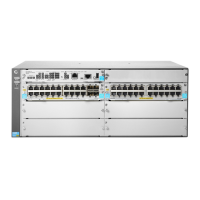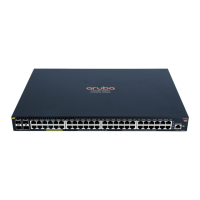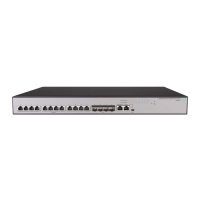82
Configuring the current device as the root bridge of a specific
spanning tree
Step Command Remarks
1. Enter system view.
system-view
N/A
2. Configure the current
device as the root
bridge.
• In STP/RSTP mode:
stp root primary
• In PVST mode:
stp vlan vlan-id-list root primary
• In MSTP mode:
stp [ instance instance-list ] root
primary
By default, a device does not
function as the root bridge.
Configuring the current device as a secondary root bridge of
a specific spanning tree
Step Command Remarks
1. Enter system view.
system-view
N/A
2. Configure the current
device as a secondary root
bridge.
• In STP/RSTP mode:
stp root secondary
• In PVST mode:
stp vlan vlan-id-list root secondary
• In MSTP mode:
stp [ instance instance-list ] root
secondary
By default, a device does not
function as a secondary root
bridge.
Configuring the device priority
Device priority is a factor in calculating the spanning tree. The priority of a device determines
whether the device can be elected as the root bridge of a spanning tree. A lower value indicates a
higher priority. You can set the priority of a device to a low value to specify the device as the root
bridge of the spanning tree. A spanning tree device can have different priorities in different spanning
trees.
During root bridge selection, if all devices in a spanning tree have the same priority, the one with the
lowest MAC address is selected. You cannot change the priority of a device after it is configured as
the root bridge or as a secondary root bridge.
To configure the priority of a device in a specified MSTI:
Step Command Remarks
1. Enter system view.
system-view
N/A
2. Configure the priority of
the current device.
• In STP/RSTP mode:
stp priority priority
• In PVST mode:
stp vlan vlan-id-list priority priority
• In MSTP mode:
stp [ instance instance-list ] priority
priority
The default setting is 32768.

